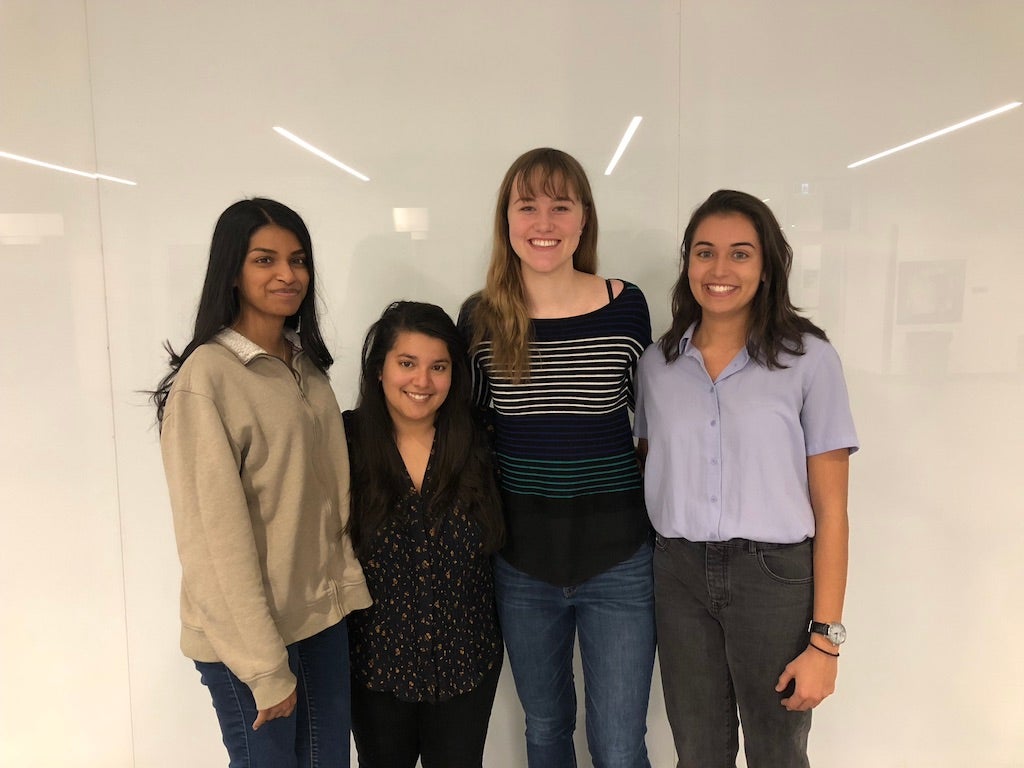
From left to right: Abiramy, Nisa, Laura and Hannah
A group of fourth-year Systems Design Engineering students chose to be part of GreenHouse’s Workplace Innovation Teams this past fall as a way to enhance their yearlong engineering capstone project.
The team of Laura Bingeman, Nisa Sial, Hannah Sennik and Abiramy Kuganesan have worked with clinicians and practitioners at KidsAbility and have received innovation management training and coaching from GreenHouse.
“We came together because we wanted to make a real difference and have the potential to impact the world,” says Bingeman. The team voted to work on a problem expressed by local rehabilitation service provider KidsAbility: improving the communication experience for nonverbal children with motor impairment who use language augmentative communication devices, like the one popularized by scientist Stephen Hawking.
The team spent several months this past fall talking with practitioners and observing clients to understand the problem. Hannah says, “We saw that current devices aren’t conducive to conversation—conversation is really slow and there’s currently no way for a device to suggest words to the user.” From there, the team moved to the ideation stage, considering a solution that would allow the device to use contextual and environmental information to provide improved suggestions.
With the help of a $2,000 award from the Faculty of Engineering, they have built a functioning prototype, and are now beta testing. They are also experimenting with their business model, trying to understand the market for their product. To support this work, Velocity and the Ministry of Seniors and Accessibility recently awarded the team with an additional $5,000 award.
“This is a new space for all of us,” says Laura. “It’s great to think about our design project going on past our degree and making an impact on these children.”
“With systems design, we naturally focus on design and the nitty-gritty details, but GreenHouse helped us step back and look at the big picture. It’s been helpful to be able to have access to people with knowledge and resources in areas where we are lacking,” says Hannah. “While engineers thinking about entrepreneurship commonly think about Velocity first, we strongly recommend GreenHouse to our peers. It also focuses on profit but adds in a social lens.”
And while there have been late nights, juggling school and life and this venture, the team has found the experience highly satisfying. “It’s more than a course. You get what you are willing to put in.”
The team was also the recipients of the Norman Esch Entrepreneurship Awards for Capstone Design and earned one of the six $10,000 prizes.
Launched in 2014 and funded by The Esch Foundation, the competition supports creative and entrepreneurial students in the pursuit of research and development, and its commercialization for the benefit of Canada.
Contenders were drawn from more than 150 projects developed and showcased this spring by over 700 senior engineering students to cap their undergraduate careers.